From the moment she arrives on the Enterprise in the first season of TNG, laden with luggage, dressed in clashing colours and intent on flirting outrageously with Captain Picard, Lwaxana Troi makes an indelible impression. Deanna describes her as “eccentric,” which is certainly true, but Majel Barrett’s thoughtful performance, and some clever costuming by designers William Theiss and Robert Blackman, paint a more nuanced portrait of this entertaining, multi-faceted character. Through her status as the Final Frontier’s foremost fashion icon, Lwaxana is revealed as an interesting and all too rare representation of a glamorous older woman on the small screen.
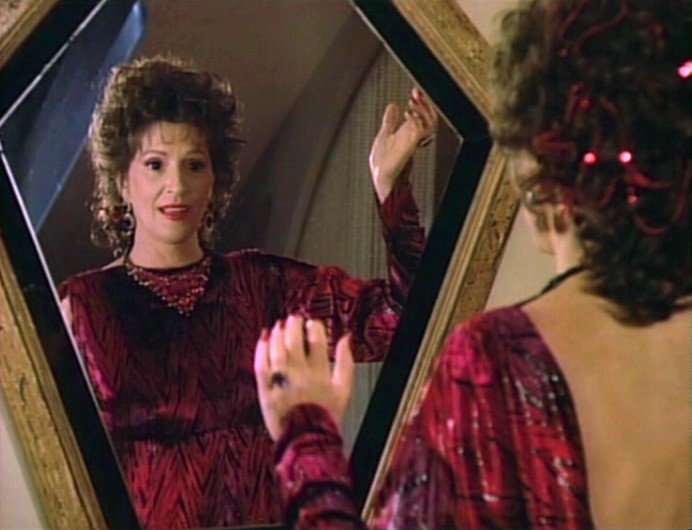
In her early appearances on TNG, Lwaxana’s bold, jewel-encrusted gowns contrast with the more practical-looking clothing worn by the Enterprise crew, and other visitors to the ship. In “Haven,” Wyatt’s mother wears a looser-fitting grey dress, while Lwaxana wears a tight fitting red dress, with a vine accessory that turns out to be a pet!
These bold costuming choices give Lwaxana the opportunity to challenge what would usually be considered “appropriate” attire for an older woman. Several of her gowns expose her shoulders, arms, back or cleavage, and we discover that even in Star Trek’s utopian future this is frowned upon; in “Manhunt,” Lwaxana has to shut down Deanna’s attempt to tell her off for wearing a low-cut dress.
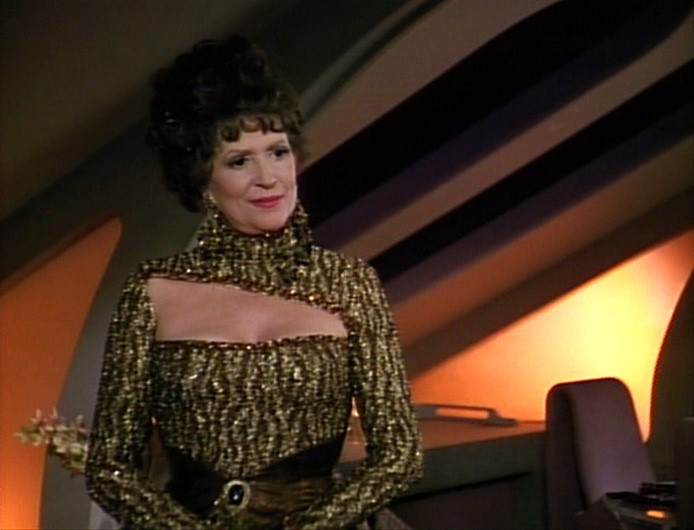
With a few exceptions, Lwaxana’s dresses have exaggerated proportions, such as 1890s-style “leg-o-mutton” sleeves, voluminous pleated skirts, capes or trains, and are usually made from metallic or brightly-colored fabrics.
Historically, women who dress too boldly or vibrantly have been considered “vulgar,” but this criticism usually boils down to women taking up space, either physically or visually. From the metre-wide, heavily embellished court gowns of the 1750s, and the crinolines and vividly-dyed dresses of the 1850s, to the big shoulder pads and bold prints of the 1980s, taste-makers have balked at women who want to be looked at on their own terms, and Lwaxana proudly continues this tradition into the 24th century. Her mock-horror at the lustful thoughts of the men around her is always played for comedy, but she is a skilled telepath and no-one really contradicts her, so it would seem that canonically she attracts as much admiration as disapproval.
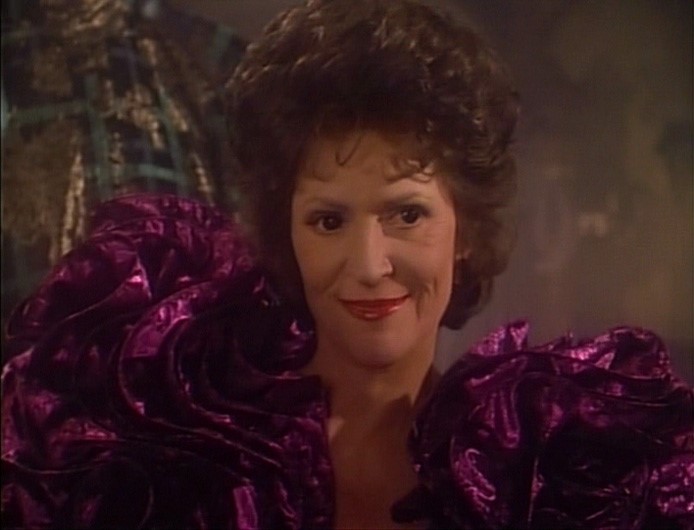
Although Lwaxana makes light of her job (“I love diplomacy, everyone dresses so well!”), her position in Betazed society and natural telepathic and empathic abilities mean she is well suited to it, as we see her visiting the Enterprise and Deep Space Nine several times on diplomatic business. Her commitment to formal wear also makes more sense when we consider the nature of her job; her work wardrobe is worn for meeting and greeting important people, not for crawling through Jeffries Tubes.
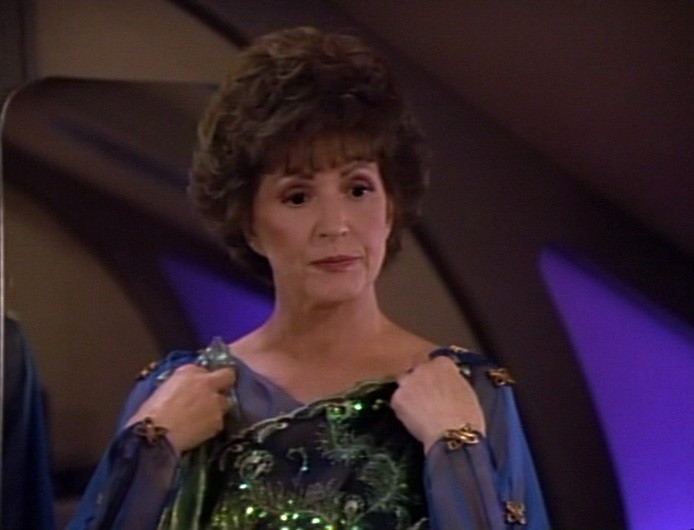
Her seemingly frivolous appearance means that people have a tendency to underestimate her; the Ferengi in “Ménage a Troi” don’t stop to consider her intelligence or bravery when they kidnap her, allowing her to outwit them, even putting herself in danger to keep her daughter safe. The casual way in which she unmasks would-be assassins at the end of “Manhunt” also suggests that her flirty facade hides a keen intellect.
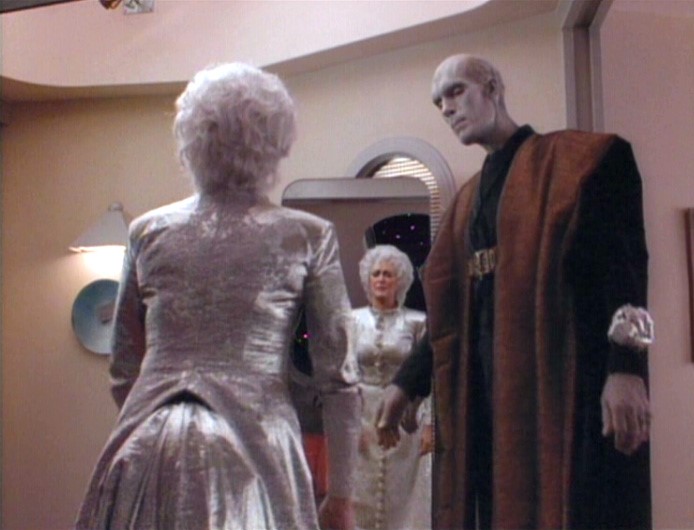
We do see her exhibiting a rather old-fashioned attitude to her appearance once or twice; she announces to Deanna that she is “dressing for a man” when she is picking an outfit to wear to meet Timicin in “Half a Life,” but at other times she shows a refreshing desire not to be constrained by notions of propriety. When she receives a very buttoned-up (albeit sparkly) wedding gown for her marriage to Minister Campio in “Cost of Living,” she asks Mr Homm if they can lower the bodice or raise the hemline. This soberly styled dress, the viewer understands immediately, is not Lwaxana. As a rather poignant contrast, for her sham marriage to Odo in “The Muse,” her simple wedding robes match his, suggesting a harmony between them.
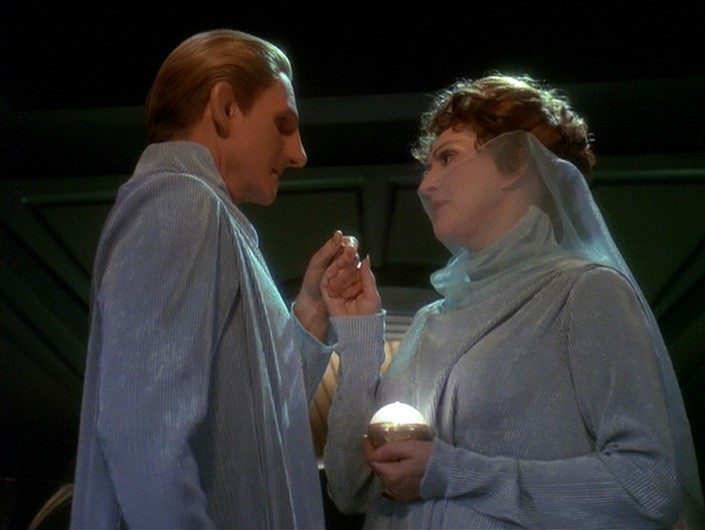
While her outrageous outfits appear to mirror her exuberant personality, Lwaxana’s bejewelled, structural gowns also function as armor, keeping people literally at arm’s length. As her character develops, we see more of her vulnerabilities; her need to be loved and her fear of ending up alone. Majel Barrett’s moving performances make it impossible for the viewer to dismiss Lwaxana as a colourful caricature, and the change in the colour palette of her costumes over the course of certain episodes means her clothing mirrors her mood.
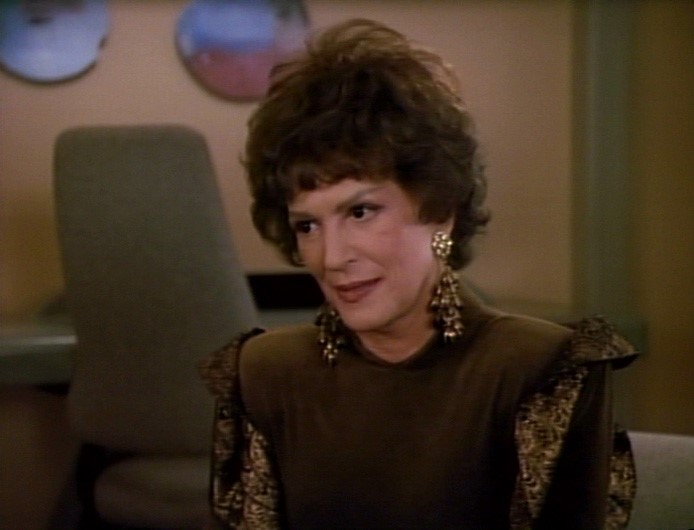
As she finds out about Timicin’s impending ritual suicide in “Half a Life” and fights to save him, she wears dresses in a deeper palette of plums and browns, with metallic detailing that looks almost Tudor or Elizabethan, giving her a serious, almost regal look. In “Dark Page,” struggling to contain her repressed grief over the loss of her daughter, she once again wears darker, less ornate clothing, which gives Deanna cause for concern: “her clothes, they’re so subdued!”
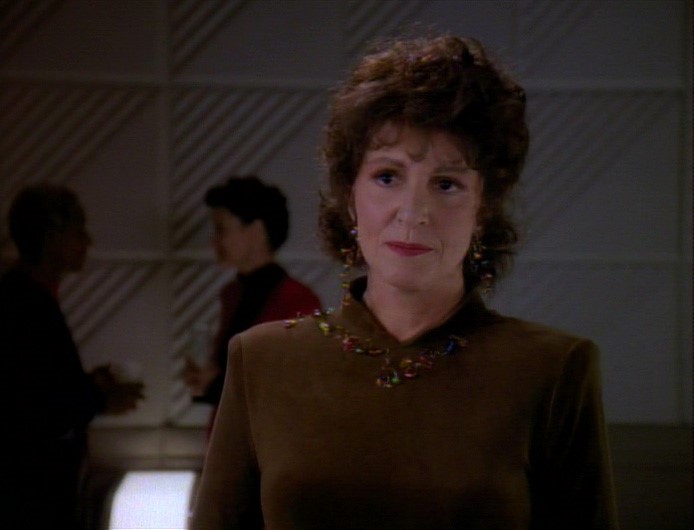
Her costumes also provide a literal representation of the times that Lwaxana reveals her true self; when encouraging Odo to trust her with his true form at the end of “The Forsaken,” she removes her wig, saying “no one’s ever seen me like this.” Fed up with prioritizing propriety over her own traditions and customs, she also allows her husband-to-be to see (all of) the real Lwaxana at her wedding ceremony at the end of “Cost of Living.” It is telling that despite her fractious relationship with several of the Enterprise crew, only Minister Campio and his aide are shocked and horrified; everyone else is maybe a little surprised, but also genuinely pleased to see a woman who is happy in her own skin.
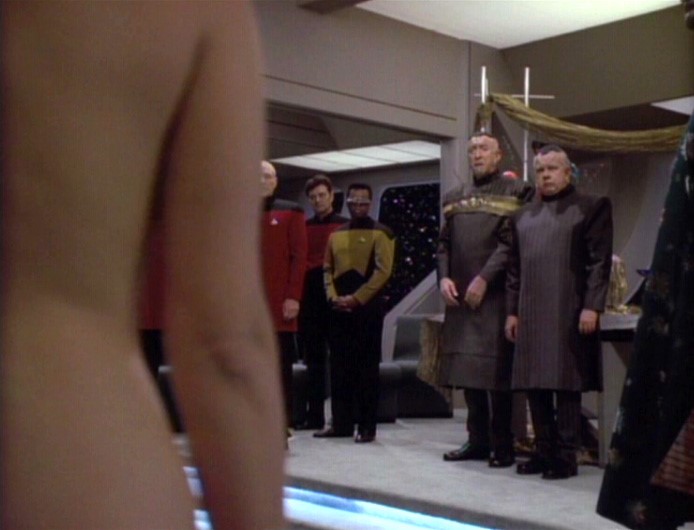
Almost 30 years ago, several friends and I presented a tableau of Lwaxana’s more famous gowns at a Star Trek convention in Denver. The whole thing was fun, but the best was analyzing why each of us picked the gown to make.
Oh wow, that sounds amazing! Which gown did you make?
Thank you! It was from “Half A Life”. The original seemed to be in brownish tones, but I could only find greens that worked. The crowd reception was gratifying, and we had lots of angst/fun doing it.